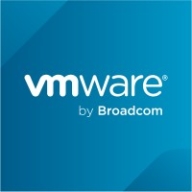

RHEV and VMware vSphere are two leading platforms in the virtualization category. While RHEV demonstrates an advantage in pricing and support, VMware vSphere stands out with its extensive feature set, appealing to enterprises that need comprehensive virtualization solutions.
Features: RHEV integrates well with open-source environments, offers simple resource management, and includes SELinux for enhanced security. VMware vSphere is recognized for its high scalability, the vMotion feature for seamless movement of virtual machines, and advanced memory management capabilities.
Room for Improvement: RHEV could benefit from enhanced third-party software integration, a more intuitive user interface, and broader community support. VMware vSphere might improve by reducing its complexity for beginners, streamlining its licensing costs, and providing more flexibility in storage options.
Ease of Deployment and Customer Service: RHEV is known for a straightforward deployment process and accessible support, benefiting from its compatibility with open-source systems. VMware vSphere, while complex to deploy, offers robust support resources helping organizations during the setup and ongoing management phases.
Pricing and ROI: RHEV is cost-effective with lower setup costs, making it attractive to budget-conscious businesses. VMware vSphere involves higher initial expenses but often justifies the cost within enterprise environments needing detailed virtualization support alongside a robust ROI.
| Product | Market Share (%) |
|---|---|
| VMware vSphere | 16.8% |
| RHEV | 2.9% |
| Other | 80.3% |


| Company Size | Count |
|---|---|
| Small Business | 22 |
| Midsize Enterprise | 5 |
| Large Enterprise | 10 |
| Company Size | Count |
|---|---|
| Small Business | 173 |
| Midsize Enterprise | 137 |
| Large Enterprise | 256 |
Red Hat Enterprise Virtualization, or RHEV, is a leading open standard enterprise virtualization management solution. This solution supports virtualization of servers and desktops using the same infrastructure and a single easy-to-use interface.
Because RHEV is based on open standards, it is vendor-independent and a lot more cost effective and flexible than proprietary solutions.
VMware vSphere is a versatile virtualization platform known for its ease of use, flexibility, and high availability. It supports seamless migration, optimal resource allocation, and centralized management, making it highly suitable for diverse infrastructure needs.
VMware vSphere is widely adopted for its virtualization capabilities that enhance hardware efficiency and ensure minimal downtime through features like High Availability and Distributed Resource Scheduler. Despite criticisms about high licensing costs and limited fault tolerance, it remains a preferred choice due to its stability, scalability, and robust integration options. Users appreciate its efficiency in managing virtual machines and hosting enterprise applications, although challenges with web client performance and hardware compatibility are noted. Organizations often look for better integration with cloud services and enhanced automation and scalability.
What are the core features of VMware vSphere?
What benefits and ROI can businesses look for?
VMware vSphere is implemented across sectors like healthcare, finance, and education for server virtualization, data center management, and private cloud creation. Its use in facilitating business-critical operations ensures high availability and efficient resource use, supporting both development and production environments.
We monitor all Server Virtualization Software reviews to prevent fraudulent reviews and keep review quality high. We do not post reviews by company employees or direct competitors. We validate each review for authenticity via cross-reference with LinkedIn, and personal follow-up with the reviewer when necessary.